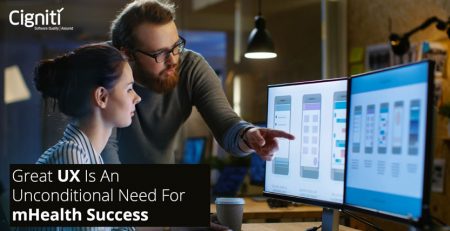All that you need to know about Accessibility Testing
Accessibility is a human right. This is the crux of why each software application or web interface should be designed and developed keeping accessibility in mind.
Tim Berners-Lee, the inventor of the World Wide Web, aptly said, “The power of the Web is in its universality. Access by everyone regardless of disability is an essential aspect.”
A web application or a software with an accessible design not only empowers people with certain disabilities to interact with the interface seamlessly but also benefits the larger population overall.
As Marcus Österberg, author at Web Strategy for Everyone says –
“When speaking of disabilities, the blind and their needs are most often used as an example. It is deceivingly simplistic since accessibility is something most of the population can benefit from. We all benefit when we are tired, in bright sunshine with a mobile, are forced to use a gaming mouse with too-high sensitivity or receive the text version of video clips when we have forgotten our earphones and are in a quiet environment.”
When a web app is developed or designed to be accessible, it allows the broader population from visually, cognitively, auditory, physically, neurologically, verbally challenged individuals to non-native speakers, aging population, people with low internet bandwidth, individuals with temporary disabilities, and people in situation limitations of a bright or quiet environment to access the web with the same effortlessness and ease that otherwise an individual is able to do.
When Tim Cook, the CEO of Apple said, “When we work on making our devices accessible by the blind, I don’t consider the bloody ROI”, it hit home.
To gain a deeper understanding of the criticality of an accessible web application, consider this statistic:
15% of the world population experience some form of disability.
That makes about 1,170,000,000 people on earth who will have trouble interacting with a web application if it is not designed for easy access. Having an inaccessible web application can draw highly negative influence on an organization and may also open the door for lawsuits.
Web accessibility testing is a subset of usability testing in which the application is tested with people having all abilities and disabilities as the target user persona. As part of web accessibility testing, an application is evaluated for its ease of navigation, access, and understanding.
Accessibility testing vs. Usability testing
Although accessibility testing and usability testing are often used interchangeably and have some overlap, there is a fine difference between the two.
As per the World Wide Web Consortium, Accessibility addresses discriminatory aspects related to equivalent user experience for people with disabilities, while Usability is about designing products to be effective, efficient, and satisfying.
Web accessibility is about designing an application with focus on alleviating any form of barriers for disabled individuals, whereas, usability is centered on the user experience design and may or may not address the needs of people with disabilities.
The business imperative of accessibility testing
In addition to the reasons such as being able to cater to the market for disabled people, conform to the legislative laws, and avoid any potential lawsuits due to non-conformance, there are a few essential business use cases of accessibility testing that organizations must consider:
- Fuel for innovation: When an application is designed for accessibility, it may often result in producing solutions to some unanticipated problems that a normal designing point of view would not have resolved. The end result is often more human-centered, natural, and contextual.
- Power to the brand: With the commitment to accessibility and inclusion, an organization can enhance their brand value and position them for immense success.
- Wider market: As an organization makes efforts to ease the online experience of people with disabilities, they are essentially tapping the potential of a market of over 1 billion individuals that have the spending power of more than $6 trillion.
Accessibility testing strategy & tools
As with any other form of software testing, accessibility testing should too be initiated early and must continue throughout the development lifecycle.
Accessibility testing should be a combination of manual and automation testing. Although there are a range of tools available, suggested by the World Wide Web Consortium to evaluate accessibility, they lack the capability to understand what a real person experiences in a real world environment on a day-to-day basis. Having this scenario in mind is essential for developing a well-designed and highly accessible application, and therefore the need for manual testing comes into the picture.
While selecting a web accessibility evaluation tool, ensure that it:
- conforms to W3C Web Content Accessibility Guidelines (WCAG) for accessibility
- supports different languages that include both the user interface as well as the language of the content they support
- supports different formats such as HTML, WAI-ARIA, CSS, SVG, and PDF as per your requirements
- offers detailed reports & assists in step-by-step evaluations, in-page feedback, and page transformation
A web accessibility evaluation tools should be selected based on the specific needs of an organization, project, or team, while considering the development process, organizational structure, complexity & size, and skills & knowledge of the developers and testers.
A web application should be tested for the following accessibility standards:
1.Perceivable
- Text alternatives are present for non-text content
- Captions and other alternatives are present for multimedia
- Content can be presented in different ways & structure
- Content is easier to see and hear
2. Operable
- Functionality is available from a keyboard
- Users have enough time to read and use the content
- Content does not cause seizures and physical reactions
- Users can easily navigate, find content, and determine where they are
- Users can use different input modalities beyond keyboard
3. Understandable
- Text is readable and understandable
- Content appears and operates in predictable ways
- Users are helped to avoid and correct mistakes
4. Robust
- Content is compatible with current and future user tools
How can we help?
Cigniti Technologies, Global Leaders in Independent Software Testing Services, places Usability Testing & Accessibility testing practices at the heart of testing with deep focus on customer satisfaction. We help you in your Digital transformation journey by means of IP-Led Solutions & business-driven testing supported by cloud-enabled mobile device lab with more than 400 mobile devices that provide maximum coverage. All this is ably powered by BlueSwan™ – our next generation proprietary software testing platform.
Connect with us to understand more about our offerings.





Leave a Reply